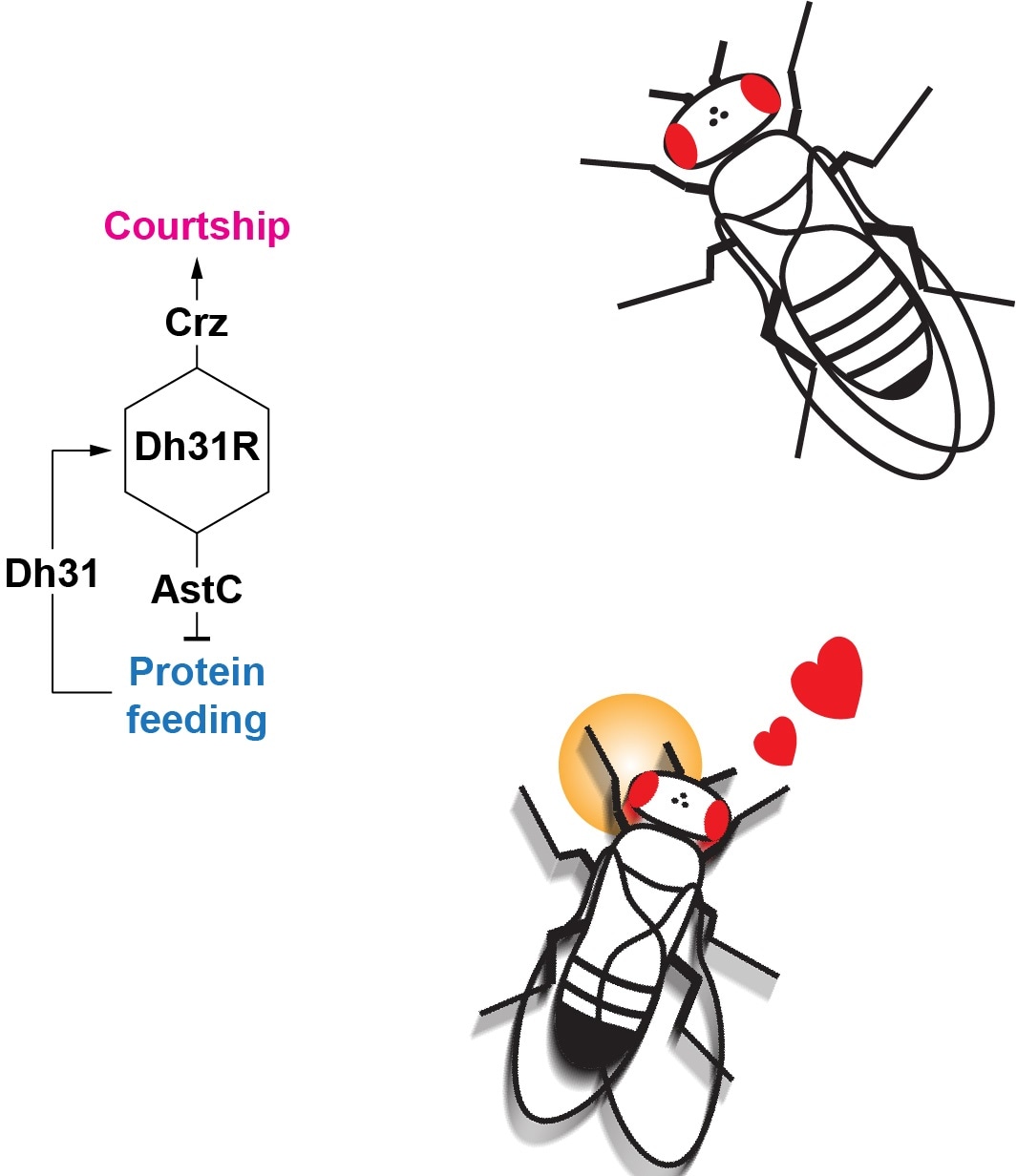The link between nutrition and mating is not limited to humans; it can be found in animals from all over the world. However, until recently, there was little evidence of direct physiological linkages between food consumption and reproductive behavior.

Male fruit flies rapidly switch from feeding to courtship behavior after consuming protein-rich food. Amino acids trigger the release of the neuropeptide Dh31 from the gut, which in turn activates Dh31R-expressing neurons in the brain to terminate feeding and initiate courtship through two parallel circuits. Image Credit: Wang Lab, University of California–San Diego.
Scientists at the University of California, San Diego, discovered that a chemical produced from the stomach after a meal causes fruit flies to shift their attention from eating to mating. The researchers observed that protein-rich meal causes the production of diuretic hormone 31, or “Dh31,” a signaling molecule reported being secreted from the gastrointestinal tract of the fly, according to a study published on February 9th, 2022, in the journal Nature.
Beyond eating behavior, their discovery of Dh31, a neuropeptide believed to be a form of a chemical messenger, opens the door to a largely untapped region of gut-to-brain communication.
We found the transition from feeding to mating and were very surprised that a single molecule would have such a profound influence on behavior decisions. Our study provides a mechanistic explanation of how the Dh31 neuropeptide acts on the brain to change the motivational drive of two evolutionarily critical behaviors.”
Jing Wang, Study Senior Author and Professor, Neurobiology, Division of Biological Sciences, University of California-San Diego
Genetics, three-photon microscopy, and fluorescence imaging were employed by UC San Diego researchers and their colleagues at UC Santa Cruz to find the Dh31 molecule while examining how animals transitioned from a feeding-focused behavior to a mating attitude.
The researchers used genetics studies in which Dh31 was knocked out in fruit flies to corroborate their findings. In these circumstances, the flies continued to forage while avoiding mating. Scientists triggered Dh31 in additional trials and discovered that the flies quickly switched to courting. Instead of the brain, where scientists anticipated the chemical to be released, they discovered Dh31 in the stomach of the fly.
These results indicate that Dh31 is a signaling molecule that reorders the priority of these two contending behaviors: feeding over courtship in the absence of Dh31 and courtship over feeding when Dh31 is released from the gut.”
Jing Wang, Study Senior Author and Professor, Neurobiology, Division of Biological Sciences, University of California-San Diego
The researchers proceeded to compare Dh31’s function as a signaling molecule to that of other signaling molecules. In mammals, orexin, a neuropeptide molecule, has been shown to serve a comparable function in the transition from awakened state to sleep patterns, including rapid eye movement (REM) and non-REM sleep.
These investigations shed light on how animals make decisions while switching from one survival activity, such as food intake, to another essential behavior, such as courting. Wang claims that their findings merely scrape the surface of what is known about how gut hormones work beyond just feeding. Future research will look at how microbiomes play a role in gut-brain connection.
This work embodies a multidisciplinary approach to understand behavioral prioritization at multiple levels, from molecules to neurons and circuit function. This line of work provides us with an empirical paradigm to study the hierarchical organization of different need-based behaviors, a framework established by Abraham Maslow 80 years ago to explain the orderly transition of human behaviors.”
Jing Wang, Study Senior Author and Professor, Neurobiology, Division of Biological Sciences, University of California-San Diego
Source:
Journal reference:
Lin, H.-H., et al. (2022) A nutrient-specific gut hormone arbitrates between courtship and feeding. Nature. doi.org/10.1038/s41586-022-04408-7.